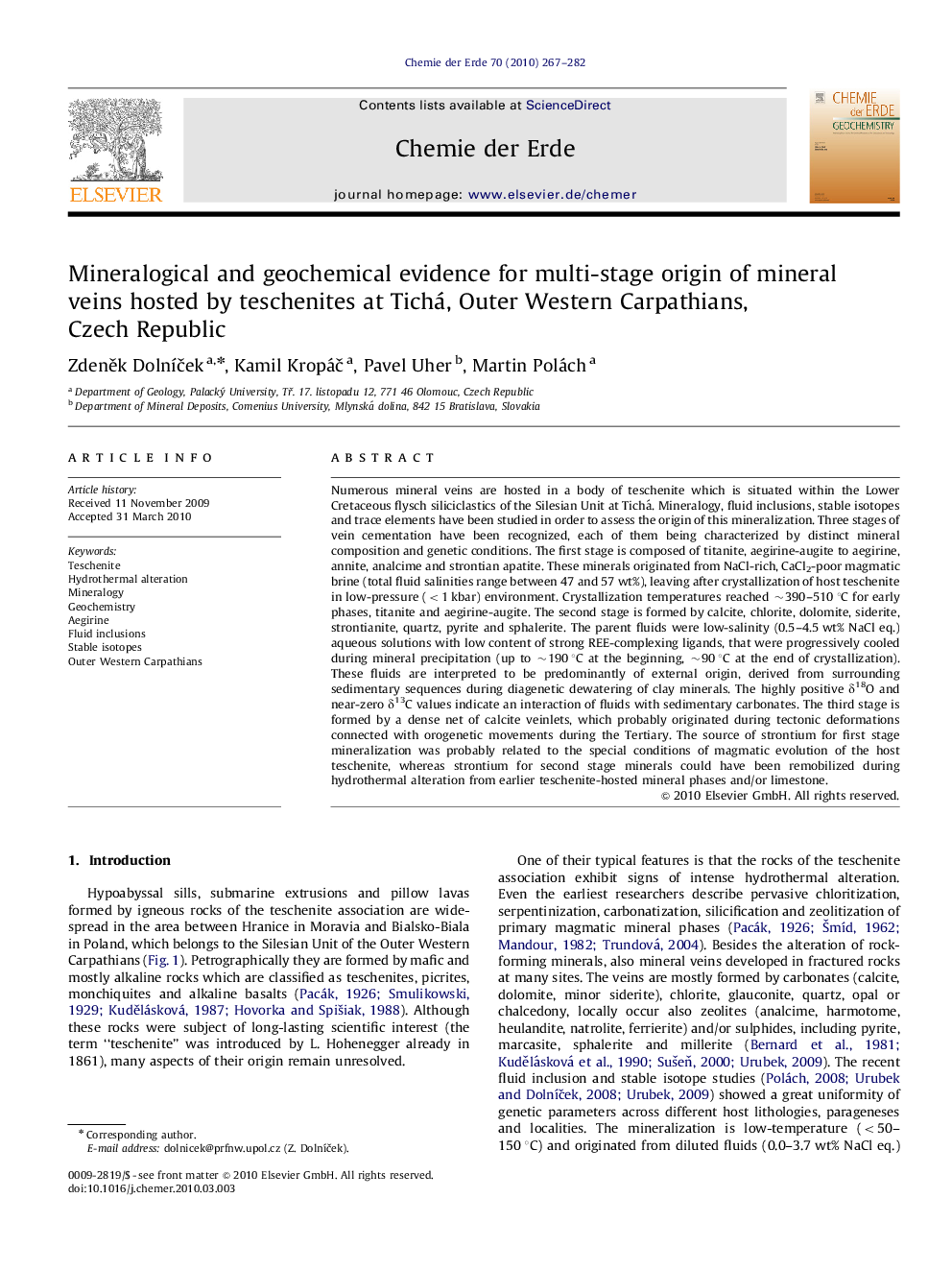| Article ID | Journal | Published Year | Pages | File Type |
|---|---|---|---|---|
| 4407070 | Chemie der Erde - Geochemistry | 2010 | 16 Pages |
Numerous mineral veins are hosted in a body of teschenite which is situated within the Lower Cretaceous flysch siliciclastics of the Silesian Unit at Tichá. Mineralogy, fluid inclusions, stable isotopes and trace elements have been studied in order to assess the origin of this mineralization. Three stages of vein cementation have been recognized, each of them being characterized by distinct mineral composition and genetic conditions. The first stage is composed of titanite, aegirine-augite to aegirine, annite, analcime and strontian apatite. These minerals originated from NaCl-rich, CaCl2-poor magmatic brine (total fluid salinities range between 47 and 57 wt%), leaving after crystallization of host teschenite in low-pressure (<1 kbar) environment. Crystallization temperatures reached ∼390–510 °C for early phases, titanite and aegirine-augite. The second stage is formed by calcite, chlorite, dolomite, siderite, strontianite, quartz, pyrite and sphalerite. The parent fluids were low-salinity (0.5–4.5 wt% NaCl eq.) aqueous solutions with low content of strong REE-complexing ligands, that were progressively cooled during mineral precipitation (up to ∼190 °C at the beginning, ∼90 °C at the end of crystallization). These fluids are interpreted to be predominantly of external origin, derived from surrounding sedimentary sequences during diagenetic dewatering of clay minerals. The highly positive δ18O and near-zero δ13C values indicate an interaction of fluids with sedimentary carbonates. The third stage is formed by a dense net of calcite veinlets, which probably originated during tectonic deformations connected with orogenetic movements during the Tertiary. The source of strontium for first stage mineralization was probably related to the special conditions of magmatic evolution of the host teschenite, whereas strontium for second stage minerals could have been remobilized during hydrothermal alteration from earlier teschenite-hosted mineral phases and/or limestone.
